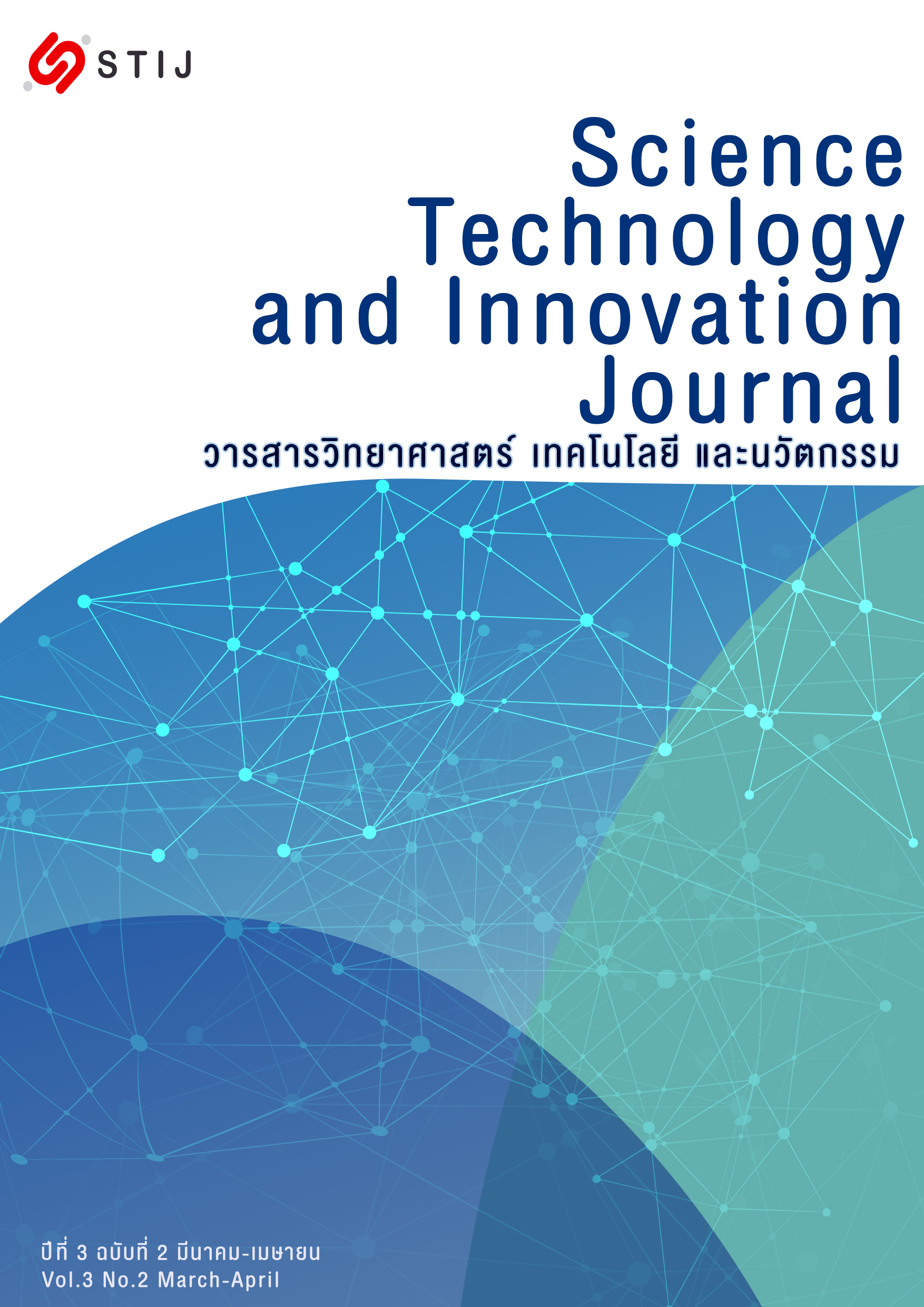Development of an electrically c Development of an electrically controlled centrifugal Lobster feeding system to optimize the dispersion of feed pellets.
Keywords:
Lobters, Centrifugal Force, DispersionAbstract
Development of an electrically controlled centrifugal lobster feeding system to optimize the dispersion of feed pellets. Its purpose is to improve and increase the efficiency of food distribution. Including increasing the efficiency of the lobster feeder to be easy to use. Convenient installation, suitable for lobster farmers. The researcher has designed and built an electric centrifugal lobster feeding system. To increase feed pellet dispersion efficiency, reduce costs and increase survival rate in lobster raising. The efficiency test of the electrically controlled centrifugal lobster feeding system The efficiency of food distribution in the ground and the shrimp pond area will be tested. and compared to determine the maximum efficiency of the lobster feeder. From the test, it was found that When the test was carried out by feeding 2 kg shrimp at a time with the voltage adjusted at 220 V, the lobster feeders had an average distribution of 7.69 min, an average distribution distance of 11.8 m when calculating the coefficient of variation (CV). The average of the five trials was 18.59% and the dispersion coefficient (UC) was 99.69%.
References
ธณัจกร เค้าละมูล. วิธีการเลี้ยงกุ้งก้ามแดง หรือ กุ้งล๊อบสเตอร์ ในบ่อปูน. (ออนไลน์) สืบค้นเมื่อวันที่ 20 สิงหาคม 2563 ที่มา https://www.baannoi.com/
อนันต์ แก่นจันทร์. เครื่องให้อาหารกุ้งก้ามแดง. (ออนไลน์) สืบค้นเมื่อวันที่ 19 สิงหาคม 2563 ที่มา file:///C:/Users/ADMIN/Pictures/16อนันต์%20แก่นจันทร์.pdf
พงศ์ธร ยิ่งยวด วราห์ เทพาหุดี นิติชูเชิด และชลอ ลิ้มสุวรรณ. เครื่องให้อาหารอัตโนมัติต่อ ผลผลิตของกุ้งขาวแวนนาไม. (ออนไลน์) สืบค้นเมื่อวันที่ 19 สิงหาคม 2563 ที่มา http://www.lib.ku.ac.th/KUCONF/2556/KC5104011.pdf
Downloads
Published
How to Cite
Issue
Section
License
Copyright (c) 2022 Science Technology and Innovation Journal

This work is licensed under a Creative Commons Attribution-NonCommercial-NoDerivatives 4.0 International License.
1. Every article published must be considered academic quality from 3 peers review experts per article.
2. The text or comments in this issue of science, technology and innovation journals belong to the author of the article. The journal organizers do not need to agree.
3. The editorial department of Science, Technology and Innovation Journal does not claim copy rights but provides references.


